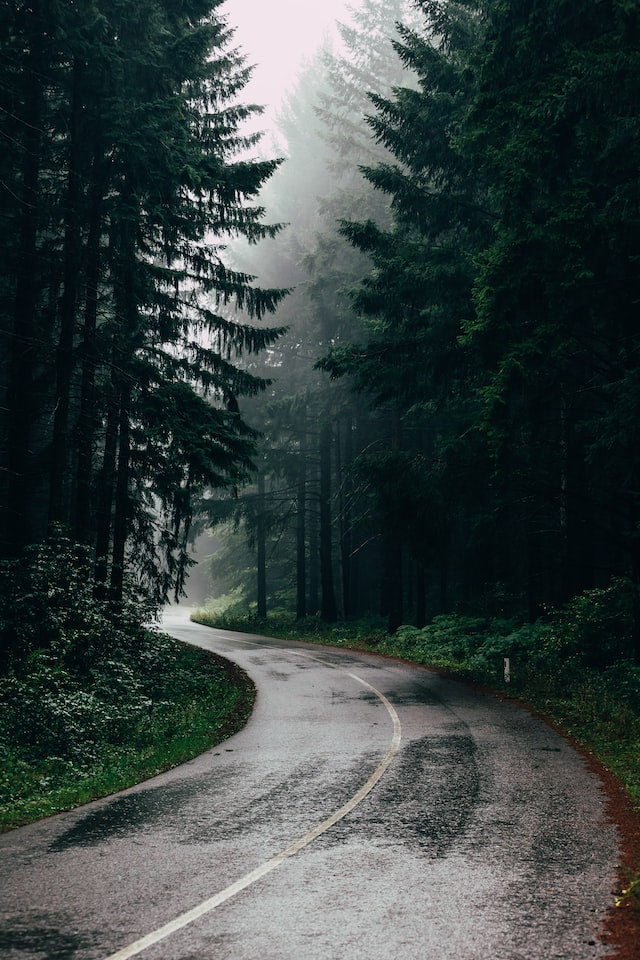What is petrichor and how does it relate to the smell of rain?
The smell of rain is a smell that, in general, human beings love. It has been hypothesised that this is due to the smell signalling bounty, abundance and the end of drought.
The term "petrichor" originated in a paper published in Nature, The Nature of Argillaceous Odour, in 1964. It is based on the Greek "Petra" (Stone) and "ichor" (Eternal essence). It seems that the authors intended it to mean the smell specifically released when rocks and clay are left in warm air from some period and then moistened (usually by rain) in the absence of microorganisms (it seems that an aim of the paper was to distinguish between the smells inherent to the rocks and those which may have been produced by microbes). Nowadays, it seems like the generally accepted meaning quickly evolved to be that of simply the smell of rain in general. This study was the first major milestone in analysing the components which make up the petrichor smell.
What makes up the smell of rain?
Geosmin, possibly the most famous component of the smell of rain, is a metabolite of (meaning it's naturally produced by) some bacteria found in the soil. It's partly responsible for the smell of beetroot, some fish, soil and spoiled food. In fact, while many people like the smell of Geosmin, they hate the taste; probably because the smell signifies rain but the taste means spoiled food. Humans are extremely sensitive to it; it has an odour detection threshold of 0.4 parts per billion. That means that if you were in a room with one molecule of Geosmin for every 1,000,000,000 molecules of air, you would still smell it!
As well as Geosmin, terpenes and other volatile organic compounds already present in the atmosphere are also important contributors to the smell of rain. To make things even more complicated, each of these factors can vary in weight depending on the local environment; this means that the smell of the rain is highly dependent upon the surroundings of where you happen to be, for example, the abundance and type of different rocks and plant species.
A question you may ask is why you only smell all of these things together when it rains. One theory on the mechanism is that rain drops land, instantaneously dissolving the chemicals adsorbed to the dry rock / soil surface. Air bubbles are trapped under the droplet and so rise to the surface. As they escape, they burst out in a fine mist which becomes suspended in the atmosphere. These aerosols act like little floating balls of dissolved smells which drift around in the air. Since they're spheres, they have a high surface area so they quickly evaporate along with all of the dissolved smell molecules. The end result is that the concentration of smell molecules in the air is much greater than under normal conditions. You can tell the power of aerosols for transporting smells yourself since that is exactly what's created when you spray perfume.
Summary: Makeup of petrichor
- Ozone
- Geosmin
- Other chemicals adsorbed to the earth as discovered in the original 1964 research paper (Elemental sulphur, organic compounds including pyridines, quinolines, carboxylic acids and others)
- Terpenes and other volatile organic compounds already present in the atmosphere
Now comes the question – how can we recreate the smell of rain as a perfumer?
Obviously, this is a little challenging since some constituents like quinoline, elemental sulphur and ozone aren't things we can easily obtain to put in our perfume (nor would they be safe). And since there's a complex medley of organic molecules, the chances of encapsulating all of them are slim. We can still attempt a sketch with some of the more unusual raw materials in the perfumer's palette.
Recreating the smell of rain
Some of the key components I selected out of my perfumery raw materials to help with this project are as follows:
- Geosmin – The smell of soil
- Floralozone – A fresh molecule sometimes used in floral perfumes. It smells like ozone and fresh air
- Dimethyl sulphide – A sulphurous molecule to add some of the unpleasant notes found in nature, making the recreation more realistic
- Myrcene, pinene & terpineol – Some terpenes to add verdant naturalness
After putting all of these components (and some others) together, I managed to create a pretty reasonable sketch of the smell of rain. For the full formula and creation process, watch the video I made documenting my journey:
References
Nature of Argillaceous Odour: https://www.nature.com/articles/201993a0
Video of rain aerosols: https://news.mit.edu/2015/rainfall-can-release-aerosols-0114
https://en.wikipedia.org/wiki/Geosmin
https://youtu.be/vFsyeL71Q58
https://youtu.be/_8vHsY_QVHM
https://basenotes.com/threads/geosmin-use.526329/
https://basenotes.com/threads/rain-the-chemical-compounds-behind-the-smell-of-rain.381932/
